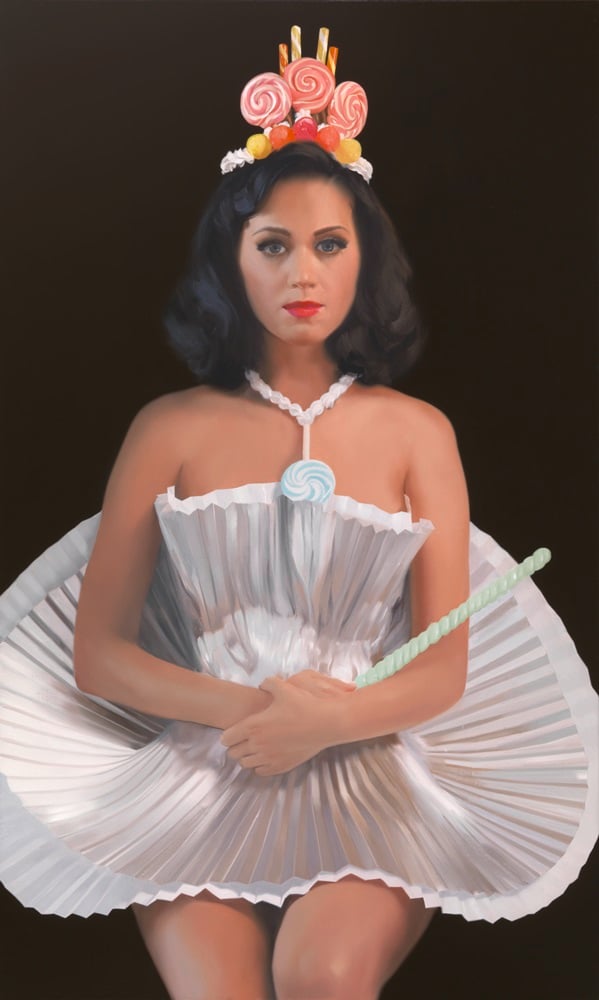
Move over George Washington and Martin Luther King Jr., Katy Perry is in the house.
The National Portrait Gallery in Washington, DC, announced that art star Will Cotton‘s portrait of pop icon Katy Perry, titled Cupcake Katy (2010), will go on view in the museum on June 18 as part of a rotating display of recently acquired portraits. The oil on linen piece depicts the singer in a pleated white dress, with a mock-serious expression, decked out in lollipops, and holding a swirled lollipop stick as though it were a scepter.
Perry “comes from an American tradition of strong women entertainers who have ‘turned the tables’ on their audiences by challenging the supposedly superficial representation of their pop personas,” according to NPG director Kim Sajet. “Will Cotton’s tongue-in-cheek portrait of Katy as a ‘cupcake’ brings to mind a traditional European portrait of a bewitching 18th-century belle—Madame de Pompadour perhaps.”
To which we say “Uhh…sure?” But we won’t deny that the portrait is pure Pop gold. “Butter melts in neither of their mouths,” Sajet continues. “Sweet but no mere piece of ‘candy,’ the woman is accessorized but not labeled: she’s the one in control.”
Cotton created the work in 2010 when he collaborated with the singer on her album Teenage Dream. He was the artistic director for the video for “California Gurls,” which was based on themes and imagery from his paintings. Cotton created original props for the set including a 3D Candy Land game board using real baked goods and sweets. His painting Cotton Candy Katy (get it?), showing the singer reclining on cotton candy clouds, was also used as cover art.
Cupcake Katy is a promised gift to the National Gallery from the James Dicke family, whose wealth and large art collection reportedly derive from a global forklift truck business based in Ohio.
In an interview with Smithsonian Magazine, Cotton said he doesn’t normally paint celebrities because “there’s this chance they can just completely take over the picture. But Katy had this kind of pop culture iconography that just seemed to me to fit into the kind of things I was interested in painting about.”